How to plant and care for Astrantia outdoors?
Perennial herbaceous astrantia, or starfish, attracts with umbrella-shaped inflorescences, consisting of small ruby or pale pink flowers, and decorates flower beds from June until frost. Gardeners appreciate the flower not only because it is a wonderful honey plant. Astrantia is easy to grow - its planting, like care, does not require special knowledge and special efforts.
Growing from seeds
Growing Astrantia from seeds is not difficult. Only, implying this method of planting, take into account the following factors:
- seeds do not always inherit the full set of parental qualities;
- fresh seeds are sown before winter.
Store-bought seed is stratified for 2-3 months if the grower has not done so before being sold.
Astrantia is often grown through seedlings, since the process is not difficult.
Seedling method
For growing seedlings of Astrantia, they take a light nutritious soil. Sow seeds in seedling boxes or containers. The technology is extremely simple - the grains are laid out on the surface of a slightly tamped substrate and covered with 1-2 mm of soil. Then the crops are moistened and covered with a transparent lid. Containers are kept at a temperature of 20-23 ° C.
The process of growing seedlings consists of the following stages.
- With the appearance of sprouts, the transparent coating is removed, the container is transferred to a well-lit place. Seedlings are watered as the upper layer of the substrate dries up, they are protected from drafts.
- At 2 weeks of age, the plants are thinned out, choosing the strongest and maintaining an interval between them of at least 10 cm.
- They are seated in personal cups when two real leaves are formed.
- Hardening begins one and a half weeks before transplanting to a flower bed.
The optimal timing for planting seedlings in open ground flower beds is the second half of May and early June for temperate latitudes. In the south, they are planted a couple of weeks earlier. The requirement for the soil is looseness and fertility. The composition does not play a significant role, but it is better to avoid extreme pH values. The ideal soil for starfish is moisture-absorbing loam with a high humus content, therefore, it is enough to mix humus and sand to the clay soil, and one humus to the sandy soil.
The starfish is also undemanding to the landing site - it develops well and blooms both in the sun and in partial shade.
It is undesirable to grow Astrantia in areas where water stagnates in bad weather or in spring.
The soil is preliminarily loosened, holes are prepared according to the size of the pots. The distance between the planting points is maintained at about 30-40 cm. The seedlings are moved into the holes, the soil is poured and compacted, and watered abundantly. The depth of the sprocket after landing should remain the same.
Seedling grown Astrantia begins flowering in the fourth year.
Seedless way
A less troublesome option for growing a starfish from seeds is sowing directly into open ground. Sowing dates - the end of autumn, when the soil freezes a little, or spring, when the soil warms up well.
Sowing is carried out either directly on the flower beds or on the beds, from where grown and strengthened seedlings are transplanted to the designated places. The seeding depth is 2 cm.
In regions with frosty winters, crops are covered with a layer of dry foliage.
Growing from delots
Delenkas from astrania are purchased from garden shops or from reliable sellers in the market. You can divide existing bushes or take from neighbors.
The method of dividing the bush is quite simple. Dates - spring, before the appearance of leaves, and autumn - at the end of the growing season.
- The bush is carefully dug out of the ground and the root nest is divided into several parts with a sharp tool.
- Sections are powdered with wood ash or crushed activated carbon.
- Delenki are seated in prepared holes dug at a distance of 40-50 cm from each other. A couple of tablespoons of humus are placed at the bottom of the hole. Delenki will start to grow in about a month, next year they will not be inferior in size to adult plants.
Although flowers on the bushes from the cut do not appear earlier than after 2-3 years, the method is used more often than growing from seeds, especially for the reproduction of rare or valuable varieties.
Astrania garden care
An undemanding starlet needs virtually no maintenance.
- Watering
Astrantia is watered based on what kind of flowering is expected from it. If one wave of flowering is enough for the summer resident, watering is done only with a prolonged absence of precipitation during extreme heat - once a week. If there is a desire to enjoy the second wave, Astrantia is watered more often so that the soil around the plant does not dry out.
Immediately after watering or rain, the soil next to the flowers is loosened and weeds are removed. Mulching plantings with peat will help to facilitate work.
- Top dressing
Astrantia growing on fertile soil is fed once a season, adding a solution of mineral fertilizers in the spring.
On poor soils, before flowering, they are fed with liquid potassium and phosphorus-containing fertilizers. Do the same with bushes growing in one place for more than 3 years.
Astrantia can grow in one place for up to 10 years without sacrificing decorativeness and general health. Experienced gardeners recommend not keeping it in one place until the last, but replanting it every 5-6 years.
- Other care activities
To increase the duration of flowering, the faded umbrellas of the star are cut off. After the first wave, all flower shoots are cut out, this stimulates the growth of new ones.
Tying to a support is necessary for tall varieties, as well as plants in areas with frequent strong winds.
Seeds are harvested from the most beautiful, spectacular flowers - after flowering, they are wrapped in gauze so that the seeds do not spill out. Completely dried heads are cut off and dried. Ripe seeds are husked, stored in paper bags in a cool dry place.
Before winter, the entire aerial part of Astrantia is cut off, the bushes are mulched with peat. Young plants (up to 3 years old) are covered with hay or spruce branches. Adults of Astrania winter well without shelter.
Diseases and pests
Zvezdovka has excellent immunity and resistance to pest attacks. Only with systematic waterlogging of the soil is it possible to damage the root system with fungal diseases. For treatment, fungicidal preparations are used (Fitosporin, Fundazl, etc.) in accordance with the manufacturer's instructions. The affected parts are cut out and destroyed.
Popular species and varieties
Three types of astrantia are cultivated in domestic gardening.
Astrantia major - Astrantia is large (large). The natural habitat of the species is the outskirts of deciduous forests and conifers of the European part of Russia. Wild-growing representatives are listed in the Red Book. Forms spreading bushes, about 40 cm in diameter, with peduncles up to 70 cm.Flowers about 5 cm in diameter.
The varieties of Astrantia are very popular among gardeners.
- Moulin rouge. The flowers are deep wine-red, the wrapping leaves are of a thicker shade. The colors are especially impressive in plants growing in well-lit areas.
- Ruby Wedding. Dark red flowers. Most effective in shaded areas. Doesn't require regular transplant.
- Claret. Flowers and wrappers are burgundy. Peduncles up to 60 cm. Designed for shaded areas, suitable for container keeping.
- Diva. It develops and blooms equally well in sunny and shaded flower beds. The flowers are dark red, the wrappers are lighter. Height about 70 cm.
- Sunnydale Variegata. The variety is interesting for its lavender flowers and variegated leaves - yellow or creamy spots on green leaves.
- Snowstar - snow-white flowers, a wrap of a white-greenish shade. Shade-loving variety.
Astrantia maxima - Astrantia is the largest, Caucasian species. The bush is compact, the height of the flower arrows is up to 70 cm. Pink inflorescences up to 4.5 cm in diameter, the wrapping leaves are pale red.
Astrantia minor - Astrantia is small. A native of the mountain ranges of southwest Europe. The height of the peduncles is up to 1 m, the flowers are up to 3 cm, of a pale pink hue.
Although the blooming of an unusually beautiful Astrantia has to wait a long time, gardeners willingly decorate their plots with it, because the rosettes of feathery leaves are decorative in themselves. And the ease of planting, ease of care, drought and frost resistance of the plant almost completely free up the energy and time for growing more capricious crops.
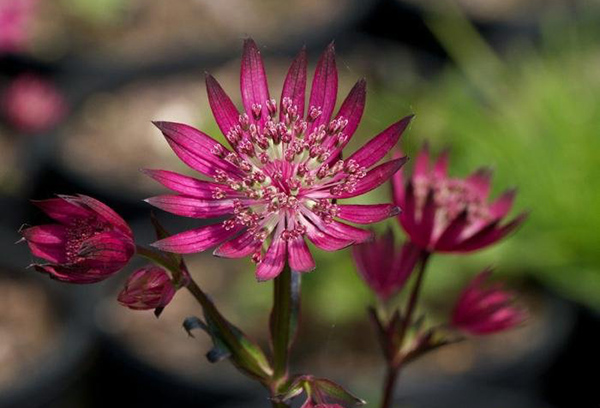
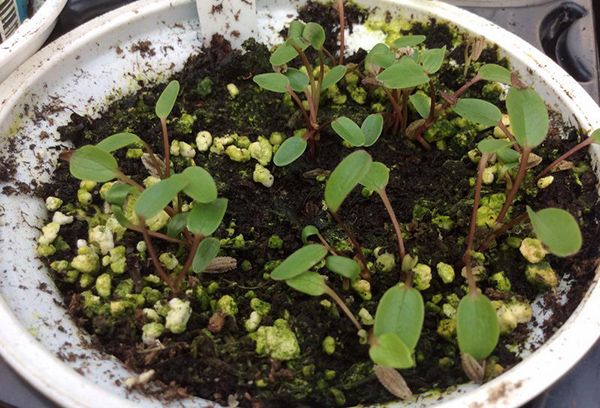
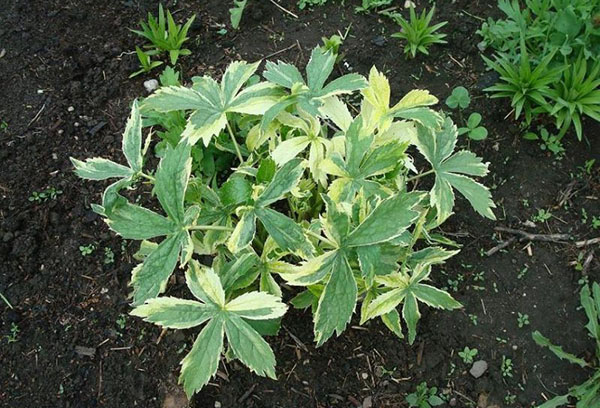
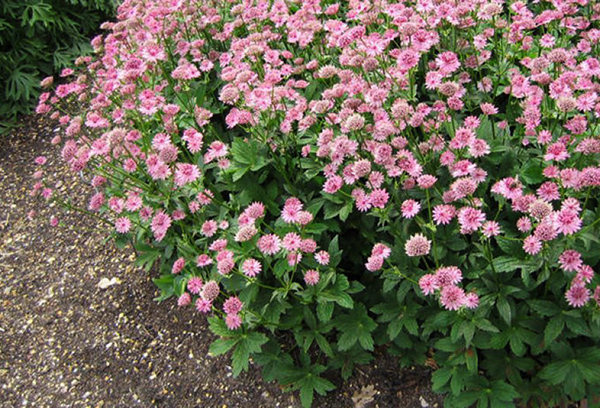
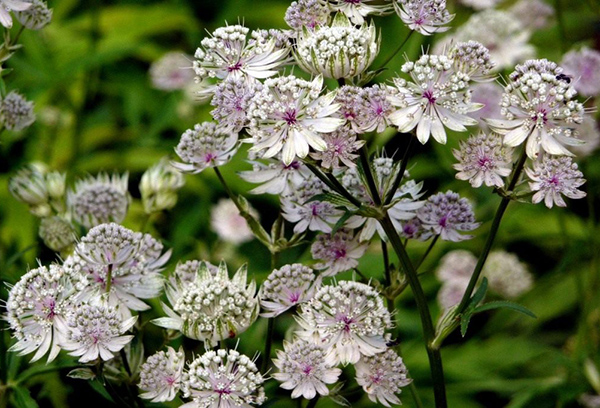
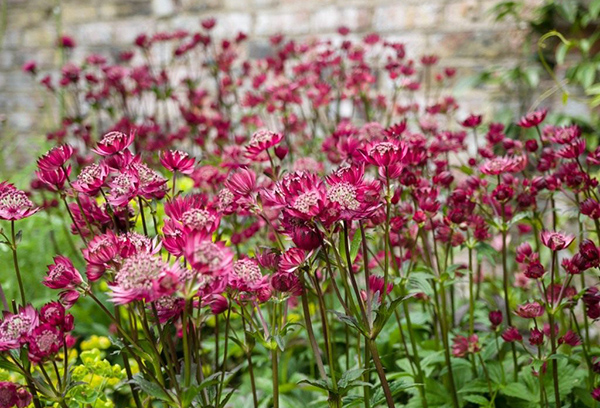
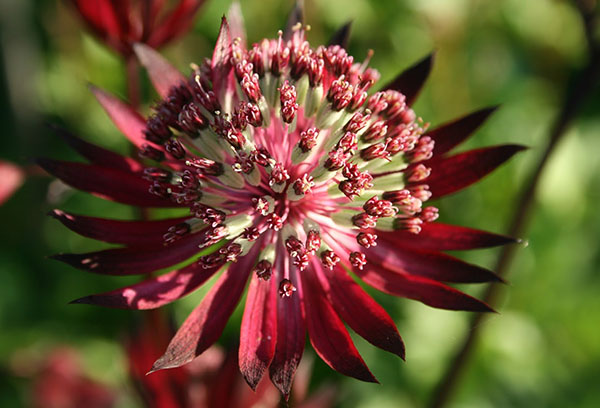
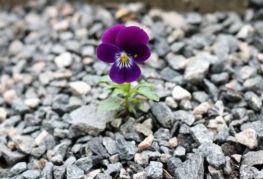
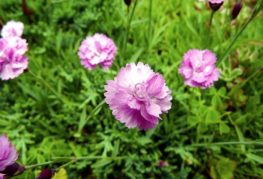
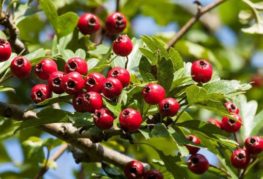
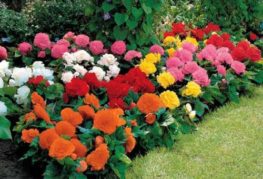
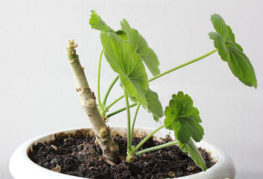
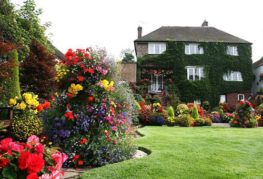
and will be published shortly.